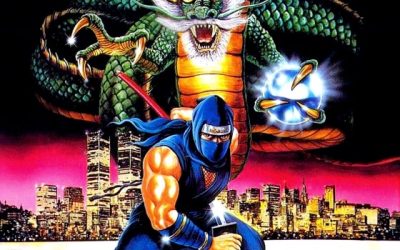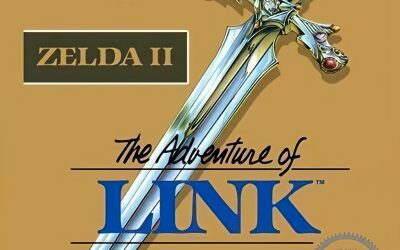Ah, the energy and excitement of diving into a classic game! In fact, this is one of my favorite 8-bit games I loved playing back in the 80s. In 1986, Nintendo released the original game that started the legendary series, Metroid, on the NES. This groundbreaking exploration game introduced us to the unforgettable character of Samus Aran, the intergalactic bounty hunter.
Ready to embark on a journey to Planet Zebes, where energy tanks, secret passageways, and jumps abound? Let’s dive in and review this awesome game!
Gameplay Mechanics: From Jump Boots to Wave Beam
Exploration and Level Design
Metroid’s level design sets it apart as a unique exploration game. When you play as Samus, you traverse through an interconnected world filled with secrets, hidden paths, and challenging obstacles. Y’know, you’ll find those fake walls and hidden tunnels you can roll down into for an extra missile or energy tank.
The game’s design encourages players to explore and backtrack, rewarding curiosity with useful upgrades like Jump Boots and energy tanks.
Combat and Enemies: The Hardcore Gamer’s Delight
Metroid presents an array of enemies, from common creatures to memorable bosses like Ridley and Kraid. The combat relies on Samus’s arm cannon, which can be upgraded with various beams, including the powerful Wave Beam. The game’s enemies each have unique attack patterns and weaknesses, requiring players to strategize and adapt—perfect for the hardcore gamer.
Power-ups and Abilities: From Energy Reserves to Beam Upgrades
Throughout your adventure, Samus will gain new abilities and power-ups essential for both combat and exploration. Some of these upgrades include the Morph Ball, allowing Samus to roll into tight spaces, and the Ice Beam, which freezes enemies. Collecting these power-ups not only makes Samus stronger but also unlocks new areas for exploration.
The Issue of Challenge and Metroid’s Legacy
Metroid is known for its difficulty, and that’s no joke. Players will face a steep learning curve as they navigate the labyrinthine world of Zebes. The lack of a built-in map can make it easy to get lost, but that’s part of the game’s charm and challenge. And believe me, you need a map! The game’s major issues, like the gameplay issue of getting lost, have been addressed in later installments like Metroid Fusion.
Metroid’s Beloved Series and Impact on Future Games
Metroid’s innovative game design has left its mark on the gaming industry. Its non-linear exploration, power-up-based progression, and atmospheric storytelling have inspired countless titles that followed. Many of the game’s core mechanics and ideas were expanded upon in its sequels, such as Metroid Fusion and the critically acclaimed Super Metroid.
The Title Screen and Beyond: A Timeless Experience
From the moment you see the title screen to the actual game, Metroid’s captivating atmosphere transports players to the alien world of Zebes. Its graphics, detailed backgrounds, and distinct environments create an immersive experience that has kept fans coming back for more. The game’s soundtrack and sound effects perfectly capture the game’s mysterious and adventurous spirit.
Tips for New Players
If you’re new to Metroid or simply looking to revisit this classic, here are some tips to help you on your journey:
- Save your progress often: Metroid doesn’t have an autosave feature, so remember to save your game manually to avoid losing progress.
- Explore, explore, explore: Take your time to thoroughly explore each area, as hidden paths and power-ups are scattered throughout the game.
- Conserve your missiles: Missiles are a precious resource, so try not to waste them on regular enemies.
- Pay attention to enemy patterns: Learning how enemies behave will help you avoid damage and defeat them more efficiently.
- Don’t be afraid to ask for help: If you’re stuck or lost, don’t hesitate to consult online guides or ask fellow gamers for advice.
More Gaming Tips
The Hidden Gems of Metroid: Secret Passageways and Energy Reserves
One of the most rewarding aspects of Metroid is uncovering its many secrets. As you explore the game’s vast world, you’ll stumble upon hidden rooms and secret passageways that contain valuable power-ups, energy reserves, and other helpful items. These discoveries not only enhance your gameplay experience but also add depth to the game world and encourage further exploration.
Boss Battles: A Test of Skill and Strategy
No Metroid game would be complete without its iconic boss battles. In the original game, you’ll face off against powerful foes like Ridley and Kraid. These challenging encounters will test your skills and require you to use all the abilities and upgrades you’ve collected throughout your journey. Successfully defeating these bosses is a testament to your perseverance and determination as a player.
The Impact of Metroid on Game Design
Metroid’s influence on game design can be seen in countless titles that have followed in its footsteps. The game’s unique blend of exploration, combat, and puzzle-solving has paved the way for other franchises like Castlevania, which adopted similar gameplay elements. Furthermore, Metroid’s interconnected world and ability-driven progression have become staples of the “Metroidvania” subgenre, which continues to thrive in the gaming industry.
Metroid’s Place in Gaming History
As the first installment in a beloved series, the original Metroid holds a special place in the hearts of gamers. Its innovative gameplay, engaging story, and memorable characters have left a lasting impact on the gaming world. Even as new titles continue to build upon Metroid’s legacy, the original game remains a classic that is well worth revisiting for both newcomers and longtime fans.
An Awesome Game for Every Gamer
Metroid is a seminal game that has stood the test of time. Its unique blend of exploration, combat, and atmospheric storytelling has captured the hearts of gamers worldwide. Whether you’re a fan of the Game Boy era or new to the series, this classic title is sure to challenge, entertain, and leave a lasting impression. So grab your arm cannon, strap on your power suit, and get ready to embark on an unforgettable adventure with Samus Aran!
FAQ
What platforms is Metroid available on?
Metroid was initially released on the NES, but it has since been re-released on various platforms, such as the Nintendo eShop, Virtual Console, and the Nintendo Switch Online service.
Is Metroid connected to the Metroid Prime series?
Yes! Metroid Prime is a subseries within the Metroid franchise, focusing on first-person gameplay and taking place between the original Metroid and Metroid II: Return of Samus.
Who is the protagonist of Metroid?
The protagonist of Metroid is Samus Aran, a highly skilled bounty hunter who often works with the Galactic Federation.
What is the main objective in Metroid?
In Metroid, Samus is tasked with infiltrating the planet Zebes, eliminating the space pirate leaders Ridley and Kraid, and destroying the Mother Brain, who controls the dangerous lifeform known as Metroids.
How long does it take to complete Metroid?
Completion times can vary depending on your familiarity with the game and your playstyle. For newcomers, it may take anywhere from 8 to 12 hours to finish the game. However, experienced players who know the ins and outs of the game can complete it in under 3 hours.




0 Comments